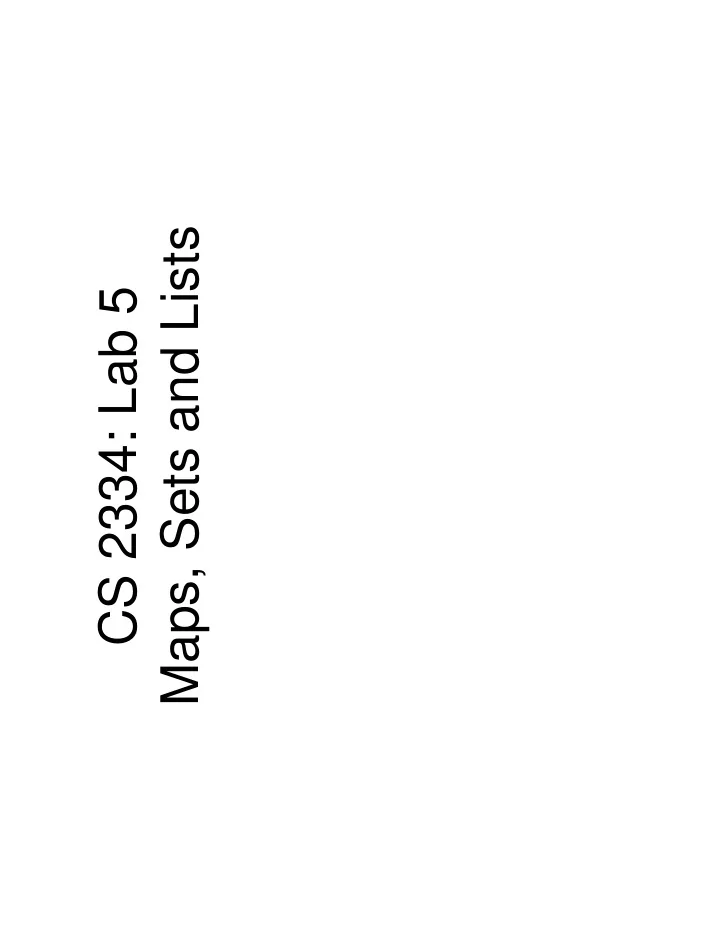

Maps, Sets and Lists CS 2334: Lab 5
Collections, Maps, Sets and Lists in Java • The abstract concepts of collections, maps, sets and lists are (or should be) easy to understand • But: – There are many different ways to implement these concepts programmatically – Different approaches have different properties, including the amount of computational time or memory required to represent and operate on the collections
Implementing Lists: Some Tradeoffs • Array – Access: fast (constant time) – Insertion: slow on average • Linked List – Access: slow on average – Insertion: fast (constant time, after access) • Tree – Access: medium on average – Insertion: medium on average Note: more coming in your Data Structures class
Maps Maps are an important component of large database systems • Maps allow for fast access and insertion of data • Keys & Values – Values are the stored data – Keys are mapped to values • Each key uniquely maps to one value – Keys therefore form a proper “set”
Non-Java Example • Suppose a : b means that “ a maps to b ” • An example map M: – M = {“a”:1, “b”:3, “c”:2} • Example accesses: – M[“a”] returns 1 – M[“b”] returns 3 • Example modifications: – M[“c”] = 4 – M[“d”] = 7 – M = {“a”:1, “b”:3, “c”:4, “d”:7}
Java Maps • Map is an interface – put(Object key, Object value) – get(Object key) • Keys form a set – keySet() – Implications? • Values form a collection – values() – Implications? • For full details, consult the Java API and your book
Map Implementations • HashMap – Fast access (constant time) – (key, value) pairs are not ordered in any meaningful way – Uses a hash function • Converts keys into indices for an internal array • TreeMap – (key, value) pairs are stored in a tree – Ordering of pairs determined by the natural order of the keys or by a Comparator – Slower access time
Generic Maps • HashMap<T,E> foo; – Specifies that foo accepts keys of type T and values of type E • Example: HashMap<String,Integer> map; map = new HashMap<String,Integer>(); map.put(“a”,1); map.put(“b”,3); map.put(“c”,2); // map contains {“a”:1, “b”:3, “c”:2} map.get(“a”); // returns 1 map.put(“c”,4); map.put(“d”,7); //map contains {“a”:1, “b”:3, “c”:4, “d”:7}
Map Example Continued… // Number of entries in a map: int num = map.size(); // A set that contains all the keys Set<String> set = map.keySet(); // A collection that contains all the values Collection<Integer> c = map.values(); // A set of (key, value) entries Set<Map.Entry<String,Integer>> pairs = map.entrySet();
General “To Do” • Download Lab5.zip class web site – Also available: these slides + relevant book sections • Milestone 1: How are entries organized in different Map implementations? • Milestone 2: What is the access performance of the different Map implementations? • Milestone 3: Creating a Maps with Different Key Variables You should complete the assignment and demo by the end of the lab session
Recommend
More recommend